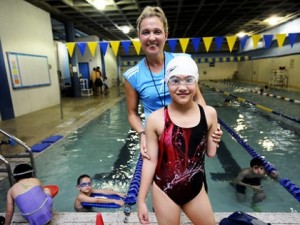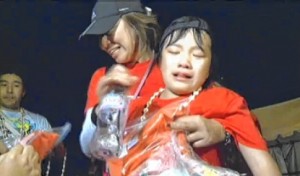As the end of the year approaches we are inundated with people of the year winners and Top 10 lists. There's even an award for "Sports Kid of the Year," awarded by SI Kids.
This year's winner is Noah Flegel, the 14-and-under world champion in wakeboarding. While the top three finalists were all boys, four girls were part of the top 10 semi-finalists: Nastasya Generalova (11, Rhythmic Gymnastics), Sage Donnelly (11, Kayaking), Lauren Williams (12, Track), and Lynne Wang (10, Swimming). I found Lynne's story particularly inspiring. Lynne is missing part of her left arm, but that didn't stop her from qualifying for the 2011 Junior Olympics in the 100-yard butterfly (note that this is for able-bodied swimmers, not those with a disability).
Another inspirational, 11-year-old female athlete is Wakana Ueda. Last week Wakana completed the Honolulu Marathon. Her time wasn't impressive (she finished in 14 hours, 3 minutes, and 12 seconds). So why mention her? Well, besides her age, Wakana is blind. The Japanese youngseter pushed through significant physical discomfort to finish the race-- something I'm not sure I could ever do!
But female athletes aren't the only impressive pint-sized phenoms. Seventeen-year-old Californian Angela Zhang is an extremely impressive young woman. Earlier this month Angela won the 2011 Seimens Competition in Math, Science, and Technology, along with $100,000 scholarship. Her research, on how to eradicate cancer stem cells, could be available as a treatment in 15 to 20 years. Not surprisingly, Angela is also an Intel International Science and Engineering Fair winner (two years in a row, in fact). It's great to see a young, female scientist excel so early in her scientific "career;" I can only imagine how far she will go with her education and with the right mentorship.
Good luck to all of these pint-sized phenoms in 2012, and beyond!


